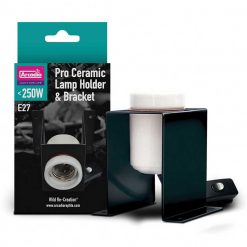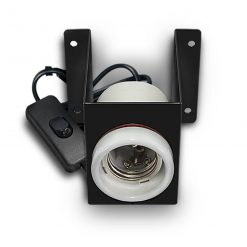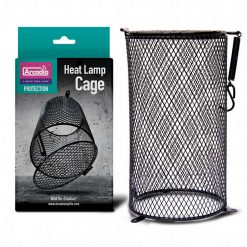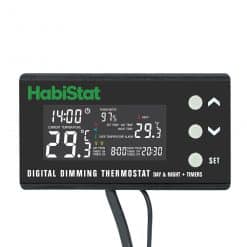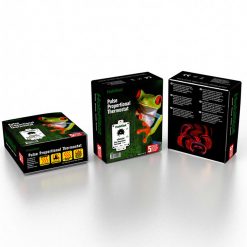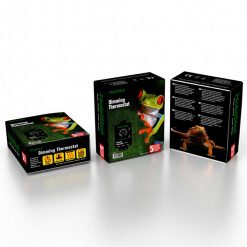

Care Sheet Contents
Royal Python (Ball Python) - Care Sheet
Serpentia’s Royal Python (Ball Python) Care Sheet and guide is intended as an introduction to this species. Also known as Ball Pythons this is a very popular python due in part to their docile temperament and small size compared to many of the other python species.
With around 7000 different colour and pattern morph combinations and with this number continually growing they are one of the most, if not the most commonly kept species in the world.
The name Royal Python is commonly used in the U.K. and other parts of Europe. In the USA they are referred to as a ‘Ball Python’ due to their tendency of curling themselves up into a tight ball when they are nervous or feel threatened.
In captivity they are more than capable of living up to 40 years or more. Deciding to own one is not a decision to be undertaken lightly.
Animal Welfare - The Five Freedoms
If you are thinking about owning a Royal Python then you are responsible for it and for providing for all of its needs and welfare. This is not only what any animal lover would do and what is morally right, it is the law.
Section 9 of The Animal Welfare Act 2006 places a duty of care on people keeping animals and for ensuring that the welfare needs of their animals are met.
So what does this mean for you as a keeper?
Well, these needs also referred to as the five freedoms, include the need for:
- Providing a suitable environment (place to live)
- The need for a suitable diet
- Exhibiting normal behaviour patterns
- To be housed with or apart from other animals and in the case of Royal Pythons this means apart.
- To be protected from pain, injury, suffering and disease
Anyone who is cruel to an animal or does not provide for its welfare needs may be banned from owning animals, fined up to £20,000 and/or sent to prison.
View the full Animal Welfare Act Legislation
Do not take on the ownership and care of a Royal Python lightly or if you do not think you will have adequate resources and time to properly provide for its welfare.
They are not pets that are cheap to care for either in terms of initial set up and equipment or the ongoing costs of properly providing for them. The initial set up of equipment, vivarium, lighting and heating, thermostats, substates feeding dishes and decor is going to run to hundreds of pounds.
It may seem blunt but if you cannot afford to properly provide for an animals welfare and needs then don’t buy or own one!
Before your Royal Python arrives
It is important to set up the correct environment so your Royal python settles quickly and continues to feed and thrive.
Be prepared well in advance of your Royal’s arrival. Don’t try and do things on the hoof or cheap, your animal is depending on you to provide everything it needs.
A good breeder will proactively advise you on how they have been keeping your snake. You should aim to reproduce that environment as closely as possible prior to their arrival. This will help alleviate possible causes of stress and provide continuity of environment for your Royal. If your snake has been kept in one environment and you completely change that then your snake may not settle or feed quickly. Worse still if you get your set up completely wrong they may become ill.
Optimise everything you have set up and check it and then check it again.
Setting up your enclosure
Providing the proper environment is extremely important in ensuring your snake settles and continues with their normal behaviour. You can keep Royal pythons in a variety of enclosures and they all have their pros and cons. They can be visually as elaborate or as simple as you like. The more you put into the enclosure the more there is to clean and maintain and the reality is your Royal python is unlikely to care great deal.
Prevent escapes!
Royals will find any weakness in your enclosure so make sure it’s escape proof! If there is a weakness in your enclosure your royal will find it and escape.
If housing your snake in a vivarium then be sure to secure the sliding doors with a vivarium lock. This will help you ensure your snake cannot escape and also prevent unwanted access.
Hatchling and juvenile Royals do well in a ‘tub’. They feel secure and a lidded tub ensures there are no draughts. You can set up and decorate a secure plastic tub equally as well as a custom made vivarium.
A word on draughts, they are very bad for your Royal. You should no matter what the enclosure type ensure that it is placed where there is no draught.
Royals by nature like to hide and feel secure so make sure you provide them hides.
Regardless of the type of enclosure it is vital to create a proper environment for the snakes.
Royals thrive if given the correct conditions but can become ill and stressed if they are not properly catered for. Vets bills will mount up quickly so prevention is better than cure.
So what size enclosure do you need?
The Animals Welfare Regulations 2018 provides guidance on the minimum size enclosure for your snake.
The length of the enclosure for snakes must be no less than 2/3’s the length of your snake.
The width of the enclosure must be no less than 1/3 of your snakes length.
Please note this is the minimum size provided in the guidance.
There is no guidance provided for snakes other than the minimum standard. We say your enclosure size should allow your snake to fully stretch out and move about freely.
A word of caution. Housing a royal python in overly large enclosure is likely to lead to an overwhelmed and stressed royal python. Make sure there are plenty of hides in large enclosures for your royal to use.
Temperature and Heating
You should provide a hot spot that stays a constant 31-31.5 Celsius (88-89 Fahrenheit). This needs to be provided 24/7. Your Royal python needs this temperature in order to be able to properly digest their food and to remain healthy.
Ensuring a proper thermal gradient in the enclosure is also very important . This simply means that you provide a gradient of temperature from low to high. Your snake can then choose whether it wants to warm up or cool down. The cool end of this gradient should be in the region of 25-26 Celsius (77-79 Fahrenheit)
Which heat source?
This will largely depend upon the type of enclosure you have chosen to set up.
Tubs, in all their guises and rack systems are generally heated with heat mats or heat cables. Most racks have heat mats or cable on each shelf in the rack covering around 1/3 rd of the floor space. This is more than sufficient to provide a proper thermal gradient.
Remember never place heat mats inside the enclosure. Your snake must not be able to have direct contact with a heat mat.
Heat mats and heat cables are not normally a suitable method for heating many commercially available melamine material type vivariums. Their construction renders the use of heat mats unsuitable as they are too thick to place the heat mat under the vivarium and still transmit enough heat through to the inside.
Ceramic heat lamps and or Reptile Radiators are normally the heating sources of choice for vivariums. The wattage required will depend upon the size of the enclosure, what material it has been made from and therefore its thermal retention properties as well as the range of ambient temperature in the room that houses the enclosure.
Again you must make sure you prevent your snake from being able to have direct contact with ceramic heat lamps and reptile radiators by fitting the appropriate safety guard.
Deep Heat Projectors are the latest heat source to the reptile market and use cutting edge technology to produce the most natural and effective wavelengths of Infrared being Infrared A and Infrared B. Infrared A and infrared B provide heat deep within the muscle tissues, warming the animal throughout just as it would in the wild. The Arcadia Deep Heat Projector produce virtually no visible light and can be used throughout the day and night. The deep heat projector uses far less power than many standard heating systems. The 50W Deep Heat Projector can outperform a 100W Ceramic Heat Lamp.
You should use a thermostat to control the Deep Heat Projector and we recommend the Habistat Dimming Thermostat for accurate control and ensure that your Royal cannot come into direct contact with the projector as they do get hot so you must use a guard.
A word on safety. These heat sources can get very hot. Do not try to run them in a plastic light fitting designed for incandescent light bulbs, it will likely melt and is a fire risk. Install them in a correctly rated porcelain holder that has been designed to cope with the high heat that Ceramic Lamps and Deep Heat projectors can achieve. We recommend the Arcadia Ceramic Holder and Bracket Pro. And never run a heat source without a quality thermostat to regulate it, ever!
Heating, Guards & Fittings
Thermostats
No matter what heat source you use it must be connected to a high quality thermostat. A thermostat is one of the most important pieces of equipment you can buy. Don’t risk using a low quality, cheap thermostat. A thermostat that fails could lead to the death of your snake.
We use and recommend the Habistat range of thermostats. There are several type of Thermostat available depending upon the heat source you wish to control and the accuracy that you require. It can be quite bewildering selecting the correct thermostat for your heat source so we have written an article to help you with the correct selection. Which Thermostat do I need?
Habistat Digital Thermostats
HabiStat Pulse Thermostats
HabiStat Dimming Thermostats
Lighting
Supplemental lighting is not necessary for Royal pythons.
But you want to make your vivarium into a display feature and look good, right? So if you do decide to install lighting it should run on a 12/12 cycle, meaning 12 hours on and 12 hours off.
Continuous bright, overhead lighting can be stressful to snakes, especially a nocturnal species such as the royal python. So despite all your efforts to install lighting your snake may decide never to leave its hides while the light is is on!
If you think your snake will appreciate a large display enclosure then you may find that your particular snake thinks otherwise! Some will love a display enclosure where they can climb and explore. Some individuals will hate it and become stressed. Watching your snake will tell you if you are providing a suitable enclosure that they approve of.
Feeding
Firstly if you handle you royal a lot then it is unlikely to feed for you. Royal pythons are unlikely to want to feed for several hours after being handled so on feeding day do not handle them.
Once they have eaten , do not handle them for 2-3 days to allow them to digest their meal in peace. Once they feed they will seek out the hot spot and sit there digesting their meal. If you don’t have a suitable hotspot then this will cause them problems if indeed they eat at all.
You should feed an appropriate size meal of the size and type your Royal pythons used to feeding upon. We always feed defrost rodents and feed in the evening in dimly lit conditions (remember Royals are nocturnal). We heat the rodents head in warm/hot water and offer the prey head first using a long pair of hemostats. This keeps your fingers (a heat source) out of range of the snake and the heated rodents head in range. Most royals like to strike from within their hide. Some simply don’t care and will feed readily whenever offered food.
You should offer hatchlings food every 5-7 days and juveniles every 7-10 days.
My new Royal Python won’t feed – Help!
There is a lot you can do to ensure you don’t end up with a non-feeding problematic Royal.
Make sure you buy from a reputable source. If you are considering buying a hatchling and it’s your first royal then stop. Don’t buy one that isn’t fully established defrost feeder, at least 4-5 months old and ideally 150 grams or more.
It is too easy to buy a hatchling from some undesirable on social media or from an unknown seller at a show. Too many just want to sell a snake and be off with your money. It may seem like a good deal but it invariable isn’t. Don’t do it is the best advice we can give.
There is a reason for your snake refusing food, they are telling you they are not happy about something. It’s down to you and your support to find out what it is and the reason they are refusing food.
We offer you complete support as and when you need it. We will not sell a snake that isn’t ready for a new home. Nor will we sell to someone that we don’t think is capable of properly providing for its welfare. It’s rare that any of our animals cause their new owners an issue but it can happen. We will always do what is necessary for the welfare of that snake and the sanity of their owner.
Water, Humidity and Substrates
Water
Make sure you always provide fresh and clean water for your royal python and check the water daily. Royals pythons enjoy a nice soak in their water bowl and like at the same time to defecate in them!
Be prepared to clean and disinfect the bowl on a weekly basis.
Humidity
Royals require humidity in the range 55-65%.
Conditions that are too dry or too wet can result in health problems.
Too dry and shedding issues will occur. If you are having shed issues then you snake is telling you your environmental set up is not right for them. An indication that your humidity level is correct is that your snake will shed in one piece.
The easiest way to increase or decrease humidity is to increase or decrease the size off the water bowl.
Substrate
There are several types of substrate that can be used for bedding for Royal pythons.
Newspaper and paper towel are good choices. You can replace it whenever the snake defecates or as needed and they are relatively inexpensive.
Cleaning your snakes enclosure is important, spot cleaning is not a good idea. Leaving urates and defecation in a hot humid environment at same level that your snake occupies is a very bad practice. It will lead to illness sooner or later.
We use unprinted white newspaper offcuts. A drawback to this type of substrate is simply aesthetics, in that it doesn’t look natural. This is often an issue for the snake keeper rather than the snake!
A popular choice for bedding is Aspen and its easy for you to see when it needs to be changed. Its downside is it tends to go mouldy fairly easily when it’s wet. Since the humidity level of a royal python’s enclosures is fairly high, this can sometimes cause problems and lead to respiratory infection.
Lignocel is another popular and good choice. It retains humidity very well and is very unlikely to get mouldy. It also has a very natural appearance and looks great in display cages.
Delivery, Quarantine and Records
Delivery
The stress from being in transit and being placed in an unfamiliar environment can sometimes make the snake go into a non-feeding mode.
You should aim to ensure your new snake arrives to you in the absolute minimum time. Ideally you should collect your snake personally and that way you also get to meet the breeder, ask any questions you may have and also ensure you have seen how your new snake has been kept and cared for. If it is not possible to collect your snake then select your delivery method with great care. Excessive transit times and mixing animals from multiple unknown sources is fraught with potential risk for the welfare and health of your snake. For these reasons we will not ship any of our snakes via a 3rd party reptile courier. We will only deliver our snakes personally and on the same day direct from our door to yours in the absolute minimum transit time possible. We do not deliver for anyone else or mix our snakes with snakes from other breeders or sellers. Our animals welfare is too important to us for us to place them at risk.
Quarantine
If this is your only snake then quarantine is less relevant but otherwise quarantine your snake away from your current animals until you are absolutely sure that it is well and healthy. How long is a suitable quarantine period? Well we recommend at least 3 months but if you have decided to acquire a snake and not seen how it was kept and have used a 3rd party reptile courier to deliver it to you then we would recommend a quarantine period of 6 months.
Quarantining involves setting up an optimum enclosure for your snake well away from any other animal in your care and being sure you do not provide the possibility for transmitting any possible ilness or parasites such as mites from one animal in quarantine to another in your care. Observe your new snake closely while they are in quarantine. Ignore quarantining your animals at your peril!
Records
Your new snake should be accompanied by its feeding records. The record should, as a minimum contain feeding frequency and prey type. Do not purchase a Royal from anyone that is not able to provide this information or if you doubt it’s provenance. It is important for you and your snake that you can see it’s feeding history and see if there are any patterns to its feeding behaviour.
We supply full feeding , shed and weight records with all Royals we sell along with their certificate of origin and genetics.

Support
If you are purchasing a snake from us we will provide all the advice and support you require both before and after your purchase and for as long as needed. Our support is not quite 24/7 but it’s very close. We want our snakes to continue to thrive after they leave our care.
We have been keeping this species for over 25 years and so are able to offer you the benefit of this experience and will be on hand whenever you need us.
Further Reading
This article is not intended to be a complete guide to Python regius as we cannot hope to cover everything and all eventualities in detail in this format. It is intended to give you a foundation and basis for further research and to begin to make an informed decision as to the suitability of this species for you
For more detailed and comprehensive information on Python regius we recommend a book!
And without doubt the best book to acquire in our opinion is:
Ball Pythons: The History, Natural History, Care, and Breeding by Tracy Barker and David Barker
It was fist published in 2006 so although many of the genetic combinations have moved on significantly since then when it comes to information on Python regius it is second to none.
Summary
And there it is, a brief introduction to the Royal Python and its care. We hope you found our Royal Python care sheet useful and informative. Feel free to contact us with any questions you may have, we are always happy to help.
Rod & Kasia



